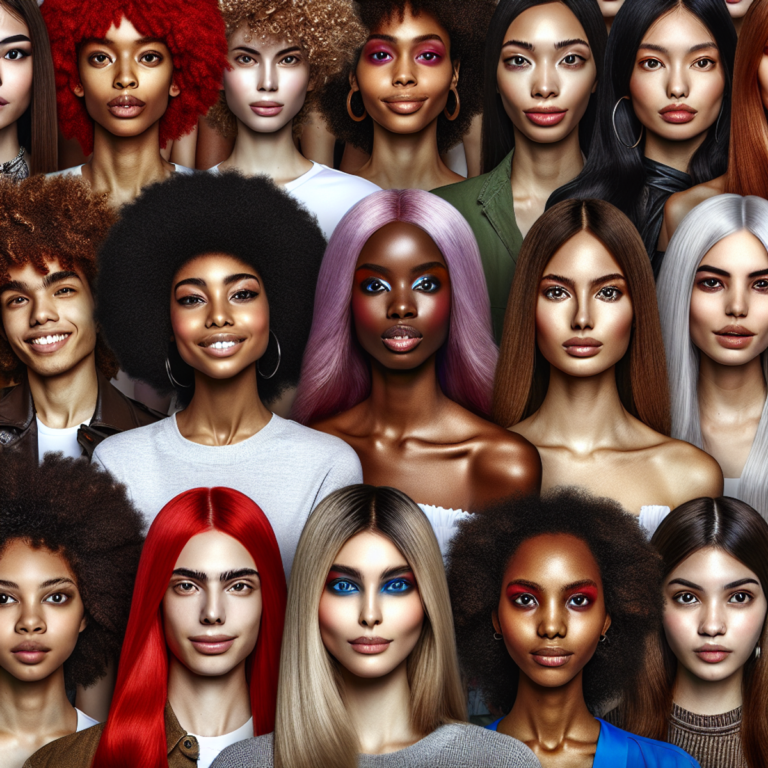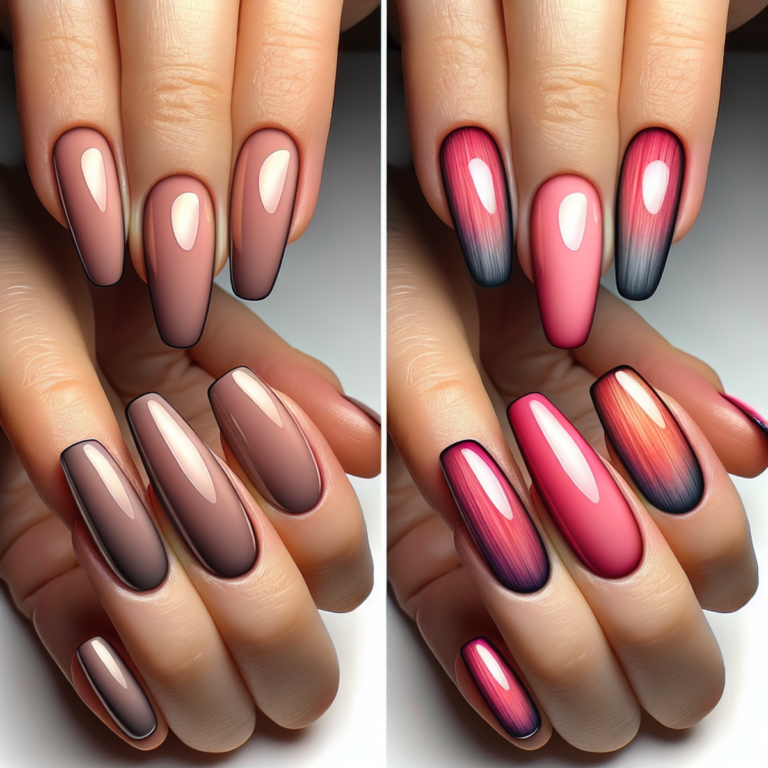I Get Why Everyone’s Obsessed With Suntanning Again Because I Was, Too

Introduction
The resurgence of tanning trend in recent years has caught the attention of many, including myself. Despite the well-documented health risks associated with excessive sun exposure and tanning beds, it seems like everyone is obsessed with achieving that sun-kissed glow once again. So, what exactly is driving this renewed fascination with tanning? Why are more and more people, particularly young individuals, embracing this trend? And how can we strike a balance between our desire for a tan and the potential health consequences?
Here are some key factors contributing to the popularity of tanning:
- Aesthetic appeal: There’s no denying the allure of a sun-kissed tan. It’s often associated with a healthy glow, radiance, and even a slimming effect. Many people feel that having a tan enhances their appearance and boosts their self-confidence.
- Psychological allure: Tanning has become more than just a beauty trend; it’s a lifestyle choice. The process of getting a tan can be relaxing and therapeutic for some individuals. Basking in the sun or visiting a tanning salon can provide a sense of escape from daily stressors and create a temporary feeling of happiness.
- Societal influence: Our society places great emphasis on the importance of physical appearance. Media portrayals, celebrity culture, and peer pressure all contribute to the perception that having a tan is desirable. We are bombarded with images of bronzed bodies on magazine covers, social media feeds filled with influencers sporting perfect tans, and advertisements promoting products that promise an enviable golden hue.
However, as we indulge in the pursuit of this sun-kissed aesthetic, it’s crucial to address the urgent need to balance our desire for a tan with potential health consequences. Excessive exposure to UV radiation from both natural sunlight and tanning beds can have serious repercussions for our skin health.
Skin cancer is one of the most alarming risks associated with tanning. According to the Skin Cancer Foundation, those who use tanning beds before the age of 35 increase their risk of developing melanoma, the deadliest form of skin cancer, by 75 percent. Furthermore, unprotected sun exposure can also lead to premature aging, wrinkles, dark spots, and other skin damage.
My Journey: Embracing and Letting Go of the Tanning Craze
Sharing Personal Anecdotes about Tanning Habits
I vividly remember my teenage years when tanning was more than just a beauty trend; it was a lifestyle. I eagerly soaked up the sun’s rays at every opportunity, reveling in the golden glow that gradually enveloped my skin. From outdoor beach sessions to indoor tanning beds, I spared no effort in pursuit of the perfect tan.
Societal Influence and Media Portrayals
The allure of tanning was not solely an individual preference but rather a product of societal influence and media portrayals. Everywhere I looked, bronzed celebrities and models adorned magazine covers, billboards, and screens, perpetuating the belief that a sun-kissed complexion was the epitome of health and beauty. Such pervasive imagery reinforced my desire to achieve that coveted golden hue.
Peer Pressure and Ideal Tan Perception
Peer pressure also played a significant role in shaping my perception of an ideal tan. Conversations with friends often revolved around achieving the perfect tan, with some even boasting about their tanning routines or recent beach escapades. Amidst such discussions, the pressure to conform to this idealized standard of beauty became undeniable, further fueling my determination to maintain a bronzed appearance.
Moments of Realization and Concern
Despite embracing the tanning craze wholeheartedly, moments of realization gradually seeped into my consciousness. The first signs were subtle – a hint of redness after prolonged sun exposure or the dryness that followed a session in a tanning bed. However, these warning signs soon evolved into genuine concern as I became more aware of the potential impact on my skin health.
Reflecting on Skin Health Impact
As I reflect on my journey with tanning, it becomes evident that concerns about skin health were not merely theoretical but deeply personal. The indiscriminate pursuit of a tan had taken its toll, leaving my skin dehydrated and vulnerable to premature aging. This realization prompted me to reevaluate my approach to tanning and prioritize the long-term well-being of my skin over fleeting aesthetic pursuits.
Psychological Implications of Tanning
While the physical consequences were apparent, I also delved into the psychological implications of this tanning craze. Studies have shown that there is a significant relationship between tanning behaviors and body image, revealing how our perception of self-worth can be influenced by societal beauty standards. This realization further solidified my resolve to break free from the shackles of the tanning obsession.
Throughout this journey, I grappled with conflicting emotions – the lingering allure of a sun-kissed glow versus the growing apprehension about its consequences. It was a transformative process that ultimately led me to embrace a more balanced perspective on tanning and its impact on both physical and psychological well-being.
The Dark Side: Understanding the Risks of Excessive Tanning
Excessive tanning, whether through prolonged sun exposure or the use of tanning beds, can have serious consequences for our skin health. It’s important to understand the biological impact and the potential dangers associated with the pursuit of a tan. In this section, we will delve into how tanning affects the skin at a biological level and highlight the link between unprotected sun exposure, premature aging, and increased risk of skin cancer.
1. Biological Impact of Tanning:
Tanning occurs when our skin is exposed to ultraviolet (UV) radiation from sunlight or artificial sources like tanning beds. When UV radiation penetrates the skin, it triggers a response in our melanocytes—the cells responsible for producing melanin, the pigment that gives our skin its color. Melanin production increases as a protective mechanism against further damage from UV radiation. This increase in melanin leads to the darkening of our skin, creating a tan.
However, excessive UV radiation can overwhelm our skin’s defense mechanisms, causing damage to our DNA and cellular structures. This damage can result in various negative effects on our skin health.
2. Premature Aging:
One of the most visible consequences of excessive tanning is premature aging. UV radiation accelerates the breakdown of collagen and elastin fibers in our skin, which are responsible for maintaining its firmness and elasticity. As a result, prolonged sun exposure can lead to wrinkles, fine lines, and sagging skin—making us appear older than we actually are.
Furthermore, repeated tanning sessions can also cause the development of age spots or dark patches on the skin. These areas of hyperpigmentation are caused by an overproduction of melanin in response to UV exposure.
3. Increased Risk of Skin Cancer:
Perhaps the most concerning risk associated with excessive tanning is an increased likelihood of developing skin cancer. UV radiation damages the DNA in our skin cells, and if this damage is not repaired properly, it can lead to the growth of cancerous cells.
There are three main types of skin cancer: basal cell carcinoma, squamous cell carcinoma, and melanoma. Basal cell carcinoma and squamous cell carcinoma are the most common types and are usually treatable if detected early. However, melanoma is the most dangerous form of skin cancer and can spread to other parts of the body if not caught in its early stages.
It’s worth noting that even a single severe sunburn during childhood or adolescence can significantly increase the risk of developing skin cancer later in life. This highlights the importance of protecting our skin from excessive sun exposure, especially during these vulnerable years.
The FDA has also emphasized the risks associated with excessive tanning practices, further reinforcing the need for awareness and caution.
In summary, excessive tanning poses significant risks to our skin health. The biological impact includes premature aging due to collagen breakdown and an increased risk of developing skin cancer as a result of DNA damage from UV radiation. Understanding these risks is crucial in making informed decisions about sun exposure and embracing safer tanning practices.
Psychological Drivers: Understanding the Desire to Tan Despite Knowing the Risks
The desire for a tan goes beyond looks. It’s influenced by psychological factors that affect how we see beauty, feel about ourselves, and fit in with others. In this section, we’ll look at these psychological drivers that make us want to tan, even when we know it can be harmful.
Body Image and Confidence
One reason why people keep tanning is because they want to look a certain way. Society often links tanned skin with being healthy, attractive, and young. We see pictures of famous people and models with tan skin who seem to perfectly represent these ideals. As a result, many of us feel pressured to meet these standards and think that getting a tan will make us look better.
Tanning can become a way for people to boost their self-esteem and feel more confident in their own skin. The process of tanning releases endorphins in the brain, which can create a temporary sense of happiness and well-being. This positive reinforcement further reinforces the desire to continue tanning.
Cultural Influence on Beauty
Our idea of what’s beautiful is also shaped by our culture. In many societies, having tan skin has been linked to wealth, leisure, and outdoor activities. It shows that someone has the time and resources to spend under the sun or on vacation.
Beauty standards change over time and vary across cultures. While light skin was once seen as the most beautiful in Western societies, there has been a shift towards valuing tanned skin in recent decades. This change can be attributed to influences from popular culture, fashion trends, and media portrayals.
These cultural norms create a strong connection between tan skin and attractiveness. As a result, individuals may feel compelled to engage in tanning behaviors in order to fit in and be perceived as attractive.
Addiction to Tanning
For some people, tanning can become an addiction. Tanorexia, also known as tan addiction or excessive tanning disorder, is a psychological condition characterized by an uncontrollable urge to tan. People with tanorexia may feel compelled to spend excessive amounts of time in the sun or tanning beds, often at the expense of their physical and mental well-being.
Addictive tendencies, such as a need for immediate gratification or a lack of impulse control, can contribute to the development of tanorexia. The release of endorphins during tanning creates a pleasurable sensation that individuals may seek to experience repeatedly. This reinforces the addictive cycle and makes it difficult for individuals to resist the urge to tan, even when they are aware of the potential risks.
Changing Perspectives
While societal pressures and psychological drivers have fueled the obsession with tanning, there is hope for change. As awareness about the dangers of excessive tanning grows, many individuals are beginning to question and challenge these norms.
The rise of the body positivity movement has played a significant role in promoting acceptance of diverse skin colors and challenging traditional beauty standards. People are embracing their natural skin tones and celebrating their unique features.
The media, fashion, and entertainment industries also have a crucial role to play in reshaping perceptions of beauty. By featuring models and celebrities with a range of skin colors and promoting inclusive representation, they can help break down the notion that tan skin is the only ideal.
Educational campaigns on sun protection and responsible tanning have also been effective in shifting attitudes towards safer practices. By highlighting the potential health risks associated with excessive tanning and promoting alternatives such as self-tanners or spray tans, these campaigns encourage individuals to prioritize their long-term well-being over fleeting trends.
In conclusion, the desire to tan despite knowing the risks is influenced by various psychological factors. Body image ideals, cultural influences, addiction tendencies, and societal pressure all contribute to our obsession with getting a sun-kissed look. However, there is a growing movement towards embracing natural skin tones and prioritizing skin health. By challenging beauty standards and promoting safer sun practices, we can change the way we think about tanning.
Stay tuned for the next section where we will explore the importance of promoting safer sun practices and embracing natural skin tones in more detail.
Changing the Narrative: Promoting Safer Sun Practices and Embracing Natural Skin Tones
The hope for change in tanning habits, especially among younger generations, lies in promoting safer sun practices and embracing natural skin tones. This shift towards responsible tanning can be achieved through education and awareness campaigns that emphasize the importance of protecting the skin from harmful UV rays.
Shifting Towards a Culture of Sun Protection
1. Education and Awareness
By educating individuals about the potential risks associated with excessive tanning and prolonged sun exposure, we can empower them to make informed decisions about their skin health. Awareness campaigns can highlight the significance of:
- Using sunscreen
- Seeking shade during peak sun hours
- Wearing protective clothing to minimize UV damage
2. Advocacy for Safe Tanning
Encouraging the adoption of safer tanning practices, such as opting for self-tanners or spray tans instead of traditional sunbathing or tanning beds, can contribute to a positive shift in societal attitudes towards achieving a sun-kissed glow.
The Role of Media, Fashion, and Entertainment Industries
Media platforms, fashion publications, and entertainment industries play a pivotal role in shaping beauty standards and perceptions of skin tones. By actively promoting diversity and inclusivity for all skin colors, these influential channels can help challenge the notion that tan skin is superior or more desirable than natural skin tones.
1. Promoting Diversity and Inclusivity
- Media platforms should feature models with different skin tones.
- Fashion publications should showcase beauty from various cultural backgrounds.
- Entertainment industries should cast actors with diverse appearances.
2. Representation Matters
Embracing natural skin tones in advertising campaigns, runway shows, and film/television productions not only cultivates a more inclusive environment but also sends a powerful message that celebrates the unique beauty of every individual. This braveinbloom.com article highlights the beauty and complexities of pale skin, offering insight into embracing, caring for, and protecting lighter complexions.
By fostering a collective mindset that values sun protection and appreciates the inherent beauty of diverse skin tones, we can pave the way for a cultural transformation that prioritizes long-term skin health over fleeting tanning trends. The European Commission’s Scientific Committee on Consumer Products provides further scientific information on this matter.
Conclusion
The recent resurgence of tanning has become a complex issue affecting both public health and body image. As someone who once fell into the trap of chasing a sun-kissed glow, I understand the allure and the longing to achieve that golden tan. However, it is crucial to acknowledge the potential dangers and put the health of our skin first.
Understanding the Factors Behind the Tanning Trend
There are several reasons why tanning has regained popularity in recent years:
- Societal Influence: The way society views and values tanned skin plays a significant role. Tan skin is often associated with beauty, health, and an active lifestyle.
- Media Portrayals: Advertisements, movies, and social media platforms frequently feature individuals with perfectly bronzed bodies, further reinforcing the idea that tanning equates to attractiveness.
- Peer Pressure: The desire to fit in and meet societal beauty standards can lead many people, especially young adults, to engage in excessive tanning behaviors.
Balancing the Desire for a Tan with Knowledge of the Risks
While it’s natural to desire a tan, it’s crucial to understand the potential consequences:
- Premature Aging: Unprotected sun exposure can accelerate skin aging, resulting in wrinkles, fine lines, and age spots appearing earlier than they naturally would.
- Increased Skin Cancer Risk: Regular exposure to UV radiation from the sun or tanning beds raises the likelihood of developing skin cancer, including deadly melanoma.
Overcoming Psychological Factors Influencing Tanning Habits
Despite being aware of these risks, many individuals continue to tan due to psychological factors such as:
- Body Image Ideals: Feeling pressure to match societal beauty standards and believing that having tan skin makes them more attractive.
- Self-Esteem Issues: Using tanning as a way to boost confidence or mask insecurities about one’s appearance.
- Addictive Behaviors: Developing a dependency on the endorphin rush or relaxation that comes from tanning, making it challenging to stop.
Shifting Towards Safer Sun Practices and Body Positivity
To address the tanning obsession and promote healthier attitudes towards our skin, we must take action on multiple fronts:
- Education and Awareness: Implementing campaigns that inform individuals about the risks associated with excessive tanning and provide guidance on safer alternatives.
- Encouraging Sun-Safe Habits: Emphasizing the importance of wearing sunscreen, seeking shade during peak hours, and using protective clothing to minimize sun damage.
- Reshaping Beauty Standards: Encouraging media outlets, fashion brands, and entertainment industries to showcase diversity and inclusivity by representing individuals with various skin tones.
- Building Self-Acceptance: Promoting body positivity and self-love for all skin colors, celebrating the unique beauty that each person possesses.
By taking these steps, we can work towards creating a society where sun protection is valued, responsible tanning practices are embraced, and natural skin tones are celebrated. It’s time to shift away from the obsession with tanning and towards a healthier mindset that prioritizes our long-term well-being.
“Your skin is not paper; don’t cut it.
Your face isn’t a mask; don’t hide it.
Your size isn’t a book; don’t judge it.
Your life isn’t a film; don’t end it.” – Nikita Gill










